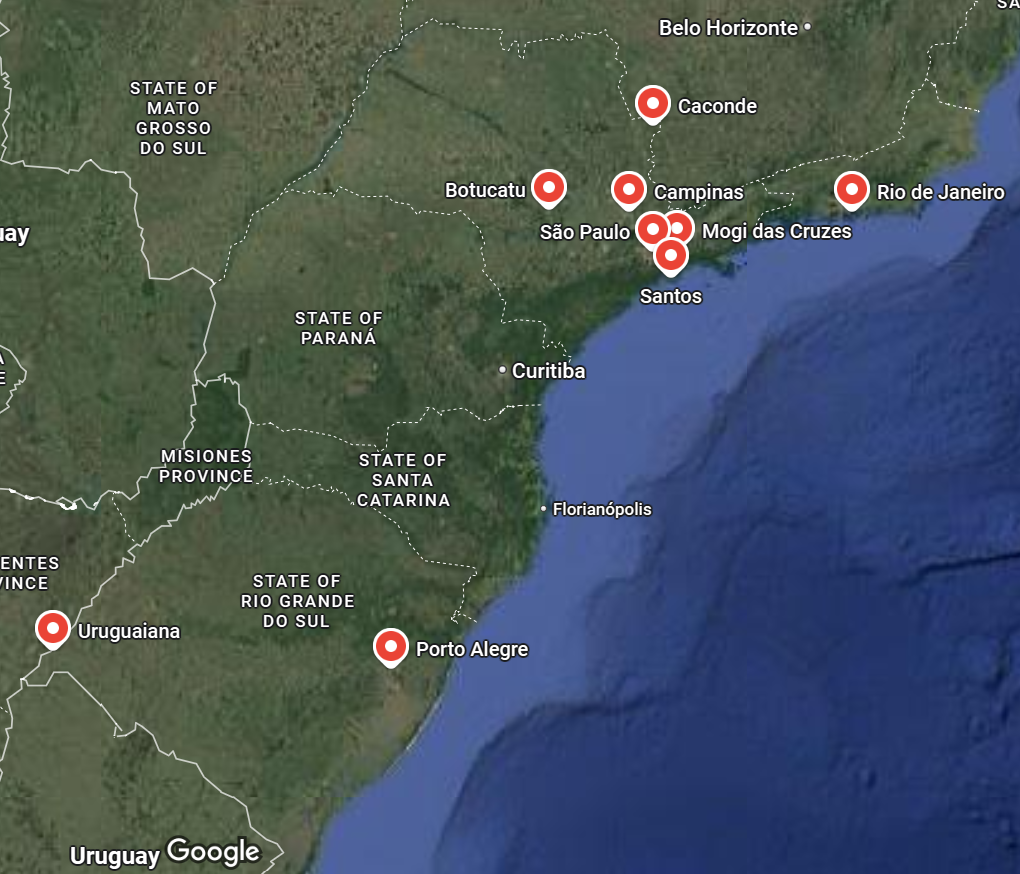Father Landell
Religious Life & Chronology
"-I wish to show to the world that the Catholic Church is not the enemy of science or of human progress. Individuals in the Church may in this or that case have opposed the light, but they did it in blindness to Catholic truth"
– Roberto Landell de Moura
The educational journey of Roberto Landell de Moura led him to study in Rome, Italy, at the age of 17. He graduated in Theology in 1886, at 25 years old, and also studied Physics and Chemistry at the Gregorian University.
From his return to Brazil in 1887 until his death in 1928, he dedicated his life to the Catholic Church, serving in various cities and churches across the states of Rio Grande do Sul, São Paulo, and Rio de Janeiro.
At that time, major social, political, and economic transformations were taking place in Brazil, such as the end of slavery in 1888 and the Proclamation of the Republic in 1889—events that marked the transition from a monarchy to a republic. During the monarchy, the Catholic Church had great influence on the Brazilian political system. Its doctrine shaped many societal values, determining beliefs and ways of life. Catholicism was the official religion of the country. The Republic separated Church and State. Positivism, with its emphasis on science and order, gained ideological strength, creating a rift with religion. Priest Landell’s creative peak blossomed at the beginning of the Old Republic (1889–1930). Both in Brazil and around the world, it was a time of technical and technological revolution. Still, many said it wasn’t easy to pursue science in Brazil—especially for someone who was both a priest and a scientist.
In addition to being a priest, Priest Landell carried out numerous studies in various fields. He was a remarkable scientist and inventor, well ahead of his time. His brilliant and innovative mind clashed with conservative thinking. Ignorance bred rumors and suspicion. At a time when wired telephones were just being implemented in Brazil, Priest Landell claimed it would be possible to communicate wirelessly—even interplanetarily! He was warned several times by his superiors and was forced to halt certain studies and practices. He was told to moderate his speeches and focus on canonical doctrine. Likely for these reasons, Priest Landell had to move so frequently between cities and churches throughout his ecclesiastical career.
Priest Landell wanted to unite science and religion and believed that his discoveries were “a gift from God.” Here is one of his statements to the press:
“-I wish to show to the world that the Catholic Church is not the enemy of science or of human progress. Individuals in the Church may in this or that case have opposed the light, but they did it in blindness to Catholic truth. I have myself met with opposition from my fellow believers. In Brazil a superstitious mob, holding that I was in partnership with the devil, broke into my study and destroyed my apparatus. Nearly all my friends, of education and intelligence, whether in or out of holy orders, looked upon my theories as contrary to science. I know what it is to feel like Galileo and to cry: ‘E put si muove’. When everybody was against me I simply stood my ground and said, ‘it is so, it can be no otherwise.’ “
Chronology of Priest Landell’s Religious Life
1886 – Rome: Ordained a priest on November 28.
1887 – Porto Alegre (RS): Appointed chaplain of the Igreja do Bonfim and professor of Sacred and Ecclesiastical History at the Seminário Episcopal N. S. Madre de Deus, on February 28.
1891 – Uruguaiana (RS): Parish priest of Igreja Matriz de Sant’Ana, as of May 25.
1894 – São Paulo (SP): Submitted documents at the Cartório da Comarca Episcopal, on June 26. Performed priestly duties in Santos and at the Catedral da Sé.
1894 – Campinas (SP): Appointed parish priest of Igreja Matriz de Santa Cruz from October 13, 1894, to December 19, 1896.
1897 – Rio de Janeiro: Gave lectures at several parishes in the capital of the Republic.
1898 – São Paulo: Parish priest at Igreja Matriz de Santana (Capela Santa Cruz) and chaplain at the Colégio das Irmãs de São José, from March 2, 1898, to October 1900.
1901 – New York: Worked on his inventions from August 1901 to November 1904.
1905 – Botucatu (SP): Parish priest of the Igreja Matriz, from March to November.
1906 – Mogi das Cruzes (SP): Parish priest of Igreja de Santana, from April 19, 1906, to March 1907. Practiced exorcism, documented in over 200 handwritten pages, and developed devices to detect the phenomenon. Was forced to cease these practices and resign.
1908 – Caconde (SP): Parish priest from July 2 to September, in the village of Tapiratiba, which belonged to Caconde.
1908 – Porto Alegre (RS): Parish priest of Igreja do Menino Deus, from October 18, 1908, to December 31, 1914.
1915 – Porto Alegre (RS): Parish priest of Igreja de N. S. do Rosário, in the city center, from January 6, 1915, until his death on June 30, 1928.
1916: Invested with the office of Penitentiary Canon at the start of the year.
1927: Elevated to Monsignor on September 17.
1928: Appointed Archdeacon of the Metropolitan Chapter of Porto Alegre in January.
